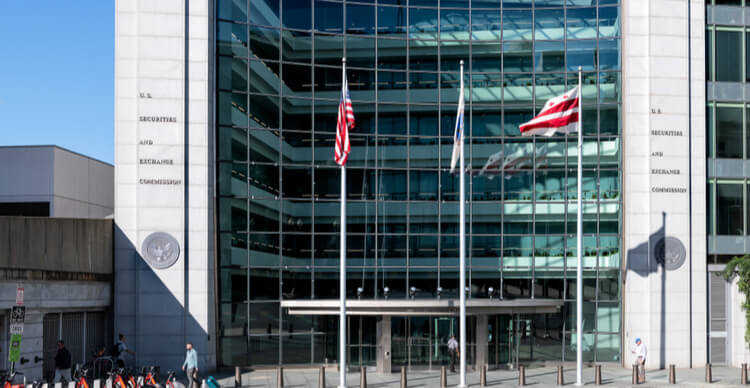In the world of web development and design, color plays a vital role in enhancing the aesthetics and user experience of a website. Creating harmonious and visually appealing color palettes has been a challenge for many designers. With CSS evolving constantly, the introduction of the color-mix() function in CSS has opened new doors for developers to manipulate and create color combinations dynamically and efficiently.
In this article, we will explore how you can create stunning color palettes using the CSS color-mix() function, understand its syntax, and discuss various use cases that make your design stand out.
What is the CSS color-mix() Function?
The color-mix() function in CSS is used to combine two colors to produce a new one. It allows developers to blend two colors in a defined proportion, thus giving them more control over the color scheme without having to rely on external tools like Photoshop or color pickers.
The basic syntax of the color-mix() function is as follows:
color-mix(in <color-space>, <color1> <percentage1>, <color2> <percentage2>);
- in <color-space>: This specifies the color space (such as srgb, display-p3, etc.) in which the two colors will be mixed.
- <color1>: The first color to be mixed.
- <percentage1>: The percentage of the first color in the mix (optional; defaults to 50%).
- <color2>: The second color to be mixed.
- <percentage2>: The percentage of the second color in the mix (optional; defaults to balance the percentage1).
This feature is supported in many modern browsers, making it easier for developers to craft rich color schemes directly in the stylesheet without having to leave the code editor.
Advantages of Using color-mix()
The color-mix() function provides several advantages to developers and designers:
- Dynamic Color Schemes: You can dynamically create new colors and shades without manually calculating color values.
- Consistency: Ensures that the colors generated are consistent across different browsers and devices.
- Flexibility: Gives designers the ability to quickly experiment with various color combinations and their ratios without relying on external tools.
- Responsive Design: Since color-mix can be manipulated using CSS, it can be adjusted dynamically depending on the context (e.g., dark mode, light mode, hover states, etc.).
Understanding the Parameters
The color-mix() function takes multiple parameters, each contributing to how the color is mixed. Let’s dive deeper into how these parameters work:
1. Color Space
The first argument defines the color space in which the colors are mixed. It determines how colors will be blended together. Common options for color spaces include:
- srgb: The default and most commonly used color space. It defines colors based on the standard RGB color model.
- display-p3: A more extensive color space that can represent a broader range of colors compared to srgb.
Example:
color-mix(in srgb, red 60%, blue 40%);
In this example, color-mix() combines 60% red and 40% blue in the srgb color space to generate a purple hue.
2. Color1 and Color2
These are the two colors that will be mixed. You can define them using any valid CSS color value, such as:
- Color names: red, blue, green, etc.
- Hexadecimal: #ff0000, #00ff00, etc.
- RGB/rgba: rgb(255, 0, 0), rgba(0, 0, 255, 0.5), etc.
- HSL/hsla: hsl(0, 100%, 50%), hsla(240, 100%, 50%, 0.5), etc.
3. Percentage of Colors
This determines how much of each color should be included in the mix. The percentages must add up to 100% (or will be auto-balanced by the browser if left blank). If you provide just one percentage, the function will automatically calculate the remaining percentage for the other color.
For example:
color-mix(in srgb, red 75%, blue);
In this case, 75% of the resulting color will come from red, and 25% from blue (because the second color's percentage is inferred).
Example Use Cases of color-mix()
Now that we understand the fundamentals, let's look at various practical examples where the color-mix() function can be applied in web design.
1. Creating Shades and Tints
A common need in design is creating different shades (darker versions) or tints (lighter versions) of a color. With color-mix(), this can be done easily by mixing a color with white or black.
Create a Tint:
div {
background-color: color-mix(in srgb, blue 70%, white);
}
This example creates a lighter version (tint) of the blue color by mixing 70% blue and 30% white.
Create a Shade:
div {
background-color: color-mix(in srgb, green 80%, black);
}
This example creates a darker version (shade) of the green color by blending 80% green with 20% black.
2. Generating Complementary Colors
Complementary colors can make a design pop, and color-mix() allows you to generate them dynamically by blending a base color with a contrasting one.
body {
background-color: color-mix(in srgb, #f00 50%, #00f 50%);
}
In this case, blending red and blue in equal amounts produces a vibrant purple background, which complements many other colors.
3. Interactive Color Schemes
You can use the color-mix() function to create interactive color schemes. For instance, you might want to change the background color of a button on hover by blending its current color with another one.
button {
background-color: #007BFF;
}
button:hover {
background-color: color-mix(in srgb, #007BFF 60%, #FF5733 40%);
}
Here, on hovering, the button's background color shifts from blue to a blend of blue and orange, giving it a lively transition effect.
4. Dark Mode Adjustments
If you're designing for both light and dark modes, color-mix() can be used to blend colors differently depending on the mode. You can define color schemes that adjust automatically, making it a great tool for responsive designs.
body {
background-color: color-mix(in srgb, white 80%, black 20%);
}
@media (prefers-color-scheme: dark) {
body {
background-color: color-mix(in srgb, black 80%, white 20%);
}
}
In this case, the background color is a light gray in light mode and switches to dark gray in dark mode, creating a seamless user experience.
5. Gradient Color Mixing
The color-mix() function can also be used in gradients to achieve a smooth transition between colors.
div {
background: linear-gradient(90deg, color-mix(in srgb, #FF5733 50%, #33FF57 50%), #33FF57);
}
This gradient smoothly transitions between a color mix of orange and green to solid green, creating a unique and modern effect.
Browser Support for color-mix()
Since the color-mix() function is relatively new, browser support may vary. It’s essential to check the compatibility of this feature before implementing it in a live project. As of 2024, it is well-supported in most modern browsers like Chrome and Firefox, but may require fallbacks or polyfills for older browsers or less frequently updated ones.
The CSS color-mix() function is a powerful tool for developers and designers alike, enabling them to craft dynamic, visually engaging color palettes without needing external tools. From creating shades and tints to enhancing interactive elements and designing for both light and dark modes, the color-mix() function offers endless possibilities.
Incorporating color-mix() into your design workflow can simplify the process of generating complex color schemes while also allowing for better consistency and flexibility. Whether you're designing for branding, accessibility, or simply to add a bit of flair to your website, mastering the color-mix() function will enhance your CSS skills and open up creative possibilities.
Embrace the color-mix() function in your next project and see how it can transform your design approach!
FAQs
1. What is the CSS color-mix() function used for?
The color-mix() function is used in CSS to blend two colors together in defined proportions. It enables developers to create new colors dynamically by mixing different colors without relying on external tools like image editors or color pickers.
2. What is the basic syntax of the color-mix() function?
The basic syntax of the color-mix() function is:
color-mix(in <color-space>, <color1> <percentage1>, <color2> <percentage2>);
- color-space: The color space in which the two colors are mixed (e.g., srgb, display-p3).
- color1: The first color.
- percentage1: The percentage of the first color in the mix (optional; defaults to 50%).
- color2: The second color.
- percentage2: The percentage of the second color in the mix (optional; defaults to balance the percentage of color1).
3. What is the default color space in the color-mix() function?
The default color space is srgb, which stands for standard RGB. It is the most commonly used color space for web and screen-based designs.
4. Can I use any type of CSS color format with color-mix()?
Yes, you can use any valid CSS color format, such as:
- Named colors (e.g., red, blue)
- Hex values (e.g., #ff0000)
- RGB/RGBA (e.g., rgb(255, 0, 0))
- HSL/HSLA (e.g., hsl(0, 100%, 50%))
5. What happens if I don't specify the percentages in color-mix()?
If you don’t specify the percentages, the color-mix() function will assume equal proportions for both colors (i.e., 50% for each). For example:
color-mix(in srgb, red, blue);
This mixes 50% red with 50% blue to create a balanced blend.
6. Can I create tints and shades using the color-mix() function?
Yes, you can create tints (lighter versions of a color) by mixing your base color with white, and shades (darker versions of a color) by mixing your base color with black. For example:
- Tint: color-mix(in srgb, blue 70%, white 30%);
- Shade: color-mix(in srgb, green 80%, black 20%);
7. Is the color-mix() function supported in all browsers?
As of 2024, the color-mix() function is supported in most modern browsers like Chrome, Firefox, and Edge. However, support might be limited in older browsers or specific versions, so it’s important to check browser compatibility and provide fallbacks where necessary.
8. Can I use the color-mix() function to create gradients?
Yes, you can combine the color-mix() function with CSS gradients to create smooth transitions between colors. For example:
background: linear-gradient(90deg, color-mix(in srgb, #FF5733 50%, #33FF57 50%), #33FF57);
This creates a gradient that starts with a color mix of orange and green, transitioning to solid green.
9. How can I use color-mix() in responsive design or dark mode?
You can dynamically adjust the color mix based on user preferences or responsive contexts. For example, you can use media queries to switch between different color mixes in light and dark modes:
@media (prefers-color-scheme: dark) {
background-color: color-mix(in srgb, black 80%, white 20%);
}
This creates a darker color scheme for dark mode while keeping a lighter scheme for light mode.
10. Can I mix more than two colors using the color-mix() function?
No, the color-mix() function can only mix two colors at a time. However, you can chain multiple color-mix() functions to achieve more complex color combinations by mixing two colors, then blending the result with another color.
Get in Touch
Website – https://www.webinfomatrix.com
Mobile - +91 9212306116
Whatsapp – https://call.whatsapp.com/voice/9rqVJyqSNMhpdFkKPZGYKj
Skype – shalabh.mishra
Telegram – shalabhmishra
Email - info@webinfomatrix.com









 English (US) ·
English (US) ·